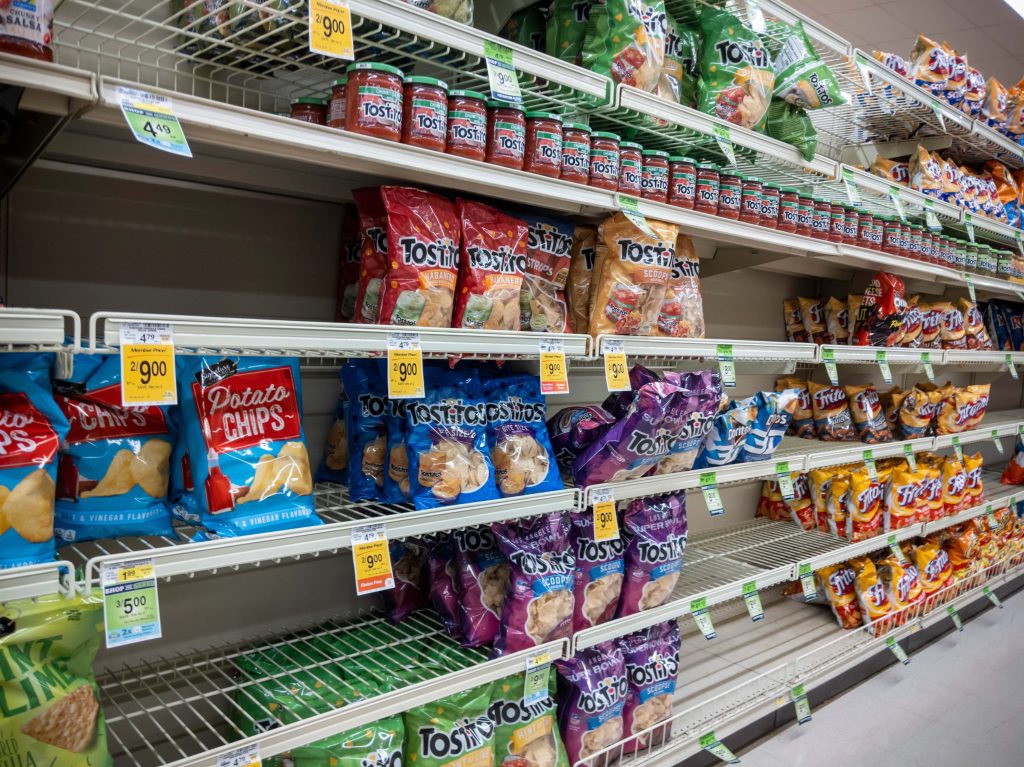We all experienced it: Countless grocery shelves were left bare and prices skyrocketed as the COVID-19 pandemic wreaked havoc across the globe. Yet even today, we still hear the same old excuse as our grocery woes continue: supply chain disruptions.
But did these disruptions warrant years of grocery price hikes? Or were the largest grocery giants just flexing their excessive power to gouge consumers and gain market power using a convenient excuse? The Federal Trade Commission (FTC) set out to answer these questions in a new report on the largest grocery retailers like Walmart, Kroger, and Amazon.
FTC’s report dives into the grocery supply chain to better understand how pandemic-related supply chain disruptions affected competition among retailers, wholesalers, and suppliers, as well as the impacts on consumers and businesses. Their conclusion? The largest grocers took advantage of these disruptions to raise prices on consumers. We break down their findings here.
America’s Shifting Grocery Landscape
FTC’s report confirms that the grocery supply chain — from retailers, wholesalers, and suppliers — has consolidated significantly in recent decades.
The days of bountiful, community-minded local grocers and mom-and-pop shops are long gone in many towns across the country as mega-retailers like Walmart swoop in. Today the top four retail grocery firms account for over 30% of sales in 2019, compared to around 15% in 1990. Much of this consolidation stems from larger firms acquiring smaller regional chains.
Similar consolidation has occurred with wholesalers and suppliers — particularly among suppliers of finished grocery products and in the meatpacking sector, where the top four packers control 85% of the market for beef processing, 53% for chicken processing, and 67% for pork processing.
As the grocery supply chain consolidates, giant corporations reach abusive levels of power to the detriment of consumers and workers — and as FTC’s report reveals, they leverage this power to get ahead even during times of global crisis.
Unpacking the Grocery Scheme
FTC’s report found that dominant firms used the pandemic to further entrench their competitive edge and “come out ahead at the expense of their competitors and the communities they serve,” as FTC’s Lina Khan said in a statement. Here’s how they did it:
- The largest retailers threatened their suppliers with fees and fines to pressure them to fill their orders at the expense of smaller retailers. They used their concentrated buying power to fill their shelves, leaving smaller independent stores’ shelves empty. When powerful retailers can control product distribution and allocation during shortages, these crises enable certain firms to further entrench their market power.
- Companies began recognizing that heavily consolidated supply chains were a liability as they struggled to fill their shelves. As a result, some retailers sought to increase their resiliency by buying up their suppliers so they could manufacture certain products themselves. This left smaller retailers with no supplier at all.
- In order to compete with large retailers, small retailers rely on suppliers’ sale prices. As inventory of certain goods became scarce, suppliers stopped offering these promotional prices — though they upheld lower wholesale pricing for the large retailers. As a result, small retailers lost their hook to draw customers away from the big retailers.
- And the worst part: The report found that food and beverage retailers increased their profits during the pandemic through excessive price increases as consumers struggled to feed their families. The report notes that “grocery retailer profits rose and remain elevated, warranting further consideration by the Commission and policymakers.”
Sound Familiar? Fertilizer, Meat, and Egg Companies Did It, Too
This isn’t the first time dominant firms have used the cover of supply chain disruptions to raise prices higher than necessary and increase their profit margins.
Months before Russia’s invasion of Ukraine, fertilizer prices spiked to all-time highs. These spikes coincided suspiciously with increased farmer income earned from commodity crops like soybeans and corn. When we looked into it, we found that fertilizer corporations’ own financial statements disproved their excuses about higher costs and supply chain issues.
In 2019, Tyson Foods used a fire at its Holcomb, KS meatpacking plant as an excuse to jack up retail prices and cut payments to cattle producers.
In early 2023, egg prices spiked by 150% nationwide. Dominant companies blamed avian flu and inflation, and while these issues caused real problems for farmers and consumers, our team looked closely at the numbers and saw that the math didn’t add up. According to their own financial statements, Cal-Maine, which controls 20% of the market, increased its gross profit margins five-fold after drastically raising the price of its eggs. Meanwhile, the company reported no cases of avian flu and their production costs had gone up only marginally.
Farm Action continues standing guard against corporate greed. We’re on the lookout for this abuse — and when we see it, we sound the alarm for the media, the public, and enforcement agencies like the FTC, the Justice Department, and the U.S. Department of Agriculture.
Written and edited by: Jessica Cusworth, Sarah Carden, Angela Huffman, Christian Lovell, and Joe Maxwell



